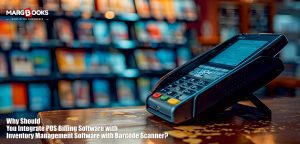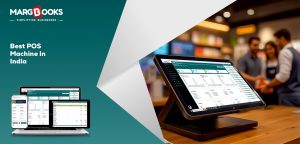The POS Point of Sale system has become an indispensable tool for businesses of all sizes. It not only enables smooth transactions but also streamlines inventory management, tracks sales, and provides valuable insights into customer behaviour. As we move into 2025, the cost of a POS system has evolved with advancements in technology, changes in business needs, and improvements in software integration.
If you’re considering implementing a POS system for your business, understanding the cost factors is essential for making an informed decision. In this blog, we’ll explore the key elements that determine the cost of a POS Point of Sale system, and how you can choose the right one for your business needs.
What is a POS Point of Sale System?
A POS Point of Sale system is a combination of hardware and software that helps businesses complete transactions, manage inventory, and maintain records. It typically includes devices such as a computer or tablet, a barcode scanner, a receipt printer, a cash drawer, and payment terminals.
The software that drives these systems is designed to process payments, generate invoices, and often includes features including inventory management, reporting, and customer management. In India, many businesses opt for POS billing software and GST billing software to comply with government regulations and manage GST efficiently.
Key Components of a POS System
Before we dive into the cost factors, it’s essential to understand the components of a POS system:
- Hardware: This includes devices such as computers, tablets, barcode scanners, receipt printers, and cash drawers.
- POS Software: This is the heart of the system, allowing you to process payments, track inventory, manage customer data, and more.
- Payment Gateway: Allows for card payments (credit/debit cards) and mobile wallet payments.
- GST Billing Software: Ensures compliance with India’s Goods and Services Tax (GST) laws by automatically generating invoices with correct tax calculations.
Factors Influencing the Cost of a POS System in 2025
When it comes to pricing, several factors play a role in determining the final cost of a POS Point of Sale system. Here’s a breakdown:
1. Type of Business
The size and complexity of your business significantly impact the cost of the system. A small retail shop might only need basic functionalities, while a larger enterprise or a multi-location business might require more advanced features.
- Small Retail Stores: For small businesses, grocery stores, or apparel outlets, a basic POS system will suffice. These systems typically cost between INR 20,000 and INR 50,000 for hardware and software.
- Large Enterprises and Multi-location Stores: For large businesses or franchises, the POS system needs to be scalable and include features such as advanced reporting, employee management, and multi-location syncing. These systems can range from INR 70,000 to INR 2,00,000 or more, depending on the requirements.
2. POS Software Features
The more features your POS system includes, the higher the price. Some of the key features to look out for include:
- Inventory Management: Tracks stock levels, purchases, sales, and helps prevent stockouts.
- Customer Relationship Management (CRM): Helps build customer profiles, track purchasing habits, and provide personalized promotions.
- GST Billing Software: Automatically calculates GST, generates tax-compliant invoices, and maintains records of tax filings.
Basic POS systems may only include payment processing and basic inventory management, while advanced ones come with additional features like integrated accounting, loyalty programs, and e-commerce integration.
3. Subscription vs. One-Time Payment
Another important factor to consider is whether the POS system operates on a subscription model or requires a one-time payment.
- Subscription-Based Models: Many modern POS systems, including POS billing software, are offered as Software-as-a-Service (SaaS). These models typically cost between INR 1,000 and INR 10,000 per month, depending on the features and number of users.
- One-Time Payment: Some POS systems require a one-time payment for the software license. This could range from INR 20,000 to INR 1,00,000, but you will still need to account for ongoing maintenance and support costs.
4. Hardware Costs
The type and quality of hardware required for the system also influence the overall cost. While basic setups might include just a tablet or PC, more advanced systems may require high-end barcode scanners, receipt printers, and cash drawers. Below is an estimate for typical hardware components:
- Tablet/PC: INR 15,000 – INR 50,000
- Barcode Scanner: INR 2,000 – INR 15,000
- Receipt Printer: INR 3,000 – INR 15,000
- Cash Drawer: INR 5,000 – INR 12,000
5. Customization and Integration
If you require the POS system to integrate with other software (e.g., your accounting system, ERP, or e-commerce platform), there might be additional costs. Some systems allow for easy integrations, while others may require custom development, which can drive up costs significantly.
- Customization: Costs for custom development and integrations can range from INR 10,000 to INR 50,000 or more.
- Support and Maintenance: Most POS systems come with free basic support, but advanced support packages can cost between INR 5,000 and INR 20,000 annually.
6. Training and Setup
Depending on the complexity of the POS system, you may need to pay for training sessions to help your staff get acquainted with the system. Setup costs can also vary, especially if you require assistance with hardware installation or software configuration.
- Training Costs: INR 5,000 to INR 25,000
- Setup Costs: INR 10,000 to INR 50,000
What Does Marg Books Offer for Indian Businesses?
For Indian businesses looking for an affordable and reliable POS Point of Sale system, Marg Books offers a comprehensive solution. Marg Books is a cloud-based POS billing software that supports GST billing software for seamless compliance with Indian tax laws. The system is designed to cater to businesses of all sizes and industries, including retail, hospitality, and wholesale.
With features like:
- GST Compliant Billing: Automatically calculate and apply GST on invoices, ensuring that your business remains compliant with Indian tax regulations.
- Inventory Management: Track stock levels, create purchase orders, and manage suppliers all within the system.
- Sales Reporting: Generate daily, weekly, and monthly reports to help you understand your sales performance and make data-driven decisions.
- Multi-Location Support: MargBooks also offers support for multi-location businesses, allowing you to sync data across different branches.
The pricing for MargBooks POS billing software starts at INR 12,000 per year, making it an affordable option for small and medium-sized businesses. The software is also customizable, and additional features can be added as your business grows.
Conclusion
In 2025, the cost of a POS Point of Sale system depends on a variety of factors including the size of your business, the features you need, and the type of hardware you prefer. Small businesses can expect to spend between INR 20,000 and INR 50,000 for a basic system, while larger enterprises with more advanced needs may spend upwards of INR 2,00,000.
Choosing the right POS system is not just about the initial investment; it’s about selecting a solution that meets your business needs and helps you grow. Whether you’re looking for POS billing software, GST billing software, or a full-fledged POS solution, it’s essential to choose a system that integrates well with your operations, is easy to use, and offers good customer support.
If you’re in India, MargBooks offers an affordable, feature-rich POS system that can help streamline your billing, inventory, and accounting tasks, ensuring you stay compliant with GST regulations while improving your business efficiency.




